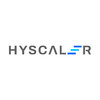Filter interviews by
Aa Pmc and Engineering Senior Engineer Interview Questions and Answers
8 Interview questions
Anti corrosive treatment on reinforcement is a process to protect steel reinforcement from corrosion in concrete structures.
Anti corrosive coatings are applied on the surface of reinforcement bars to prevent corrosion.
Common methods include epoxy coatings, galvanization, and corrosion inhibitors.
These treatments help extend the lifespan of concrete structures and prevent structural damage.
Proper surface preparatio...
Delhi's environment exposure condition is characterized by high levels of air pollution, particularly during winter months.
Delhi experiences severe air pollution due to factors such as vehicular emissions, industrial activities, construction dust, and crop burning in neighboring states.
The city often faces smog and poor air quality levels, leading to health issues such as respiratory problems, allergies, and cardi...
The batching time for one lot of RMC varies depending on the size of the batch and the equipment used.
Batching time can range from a few minutes to an hour or more.
Factors affecting batching time include batch size, equipment efficiency, and mix design complexity.
For example, a small batch of RMC may only take a few minutes to batch, while a larger batch with complex mix design could take an hour or more.
Cover in RCC refers to the thickness of concrete between the outer surface of the reinforcement and the outer surface of the concrete.
Cover protects the reinforcement from corrosion, fire, and other environmental factors.
It helps in preventing the steel bars from coming in contact with moisture and chemicals present in the environment.
Proper cover ensures the durability and strength of the structure.
The required c...
Environmental exposure conditions refer to the various factors in the environment that can impact an individual's health and well-being.
Includes factors such as air quality, water quality, noise levels, and presence of hazardous substances
Can also include factors like temperature, humidity, and access to green spaces
Examples: exposure to air pollution from traffic, living near a landfill site, working in a noisy f...
The finesse modulus is a measure of the ability of a material to resist deformation under load.
The finesse modulus is calculated by dividing the stress required to produce a given strain by the strain itself.
It is commonly used in materials science and engineering to evaluate the stiffness and strength of materials.
Higher finesse modulus values indicate greater resistance to deformation.
For example, a material wit...
Admixture dosage in concrete is typically between 0.1% to 5% of the total weight of cement used.
Admixture dosage in concrete is usually between 0.1% to 5% of the total weight of cement.
Admixtures are added to concrete to improve its workability, durability, and strength.
Examples of admixtures include water reducers, accelerators, retarders, and air-entraining agents.
The quantity of cement required in M25 concrete mix depends on the ratio of cement to other materials.
The ratio of cement to aggregate to sand in M25 concrete mix is usually 1:1:2
For 1 cubic meter of M25 concrete mix, the quantity of cement required is approximately 350 kg
The quantity of cement can vary based on the specific requirements of the project
Aa Pmc and Engineering Senior Engineer Interview Experiences
1 interview found
I applied via Referral and was interviewed before Dec 2023. There was 1 interview round.
(8 Questions)
- Q1. What us finesse modulus.
- Ans.
The finesse modulus is a measure of the ability of a material to resist deformation under load.
The finesse modulus is calculated by dividing the stress required to produce a given strain by the strain itself.
It is commonly used in materials science and engineering to evaluate the stiffness and strength of materials.
Higher finesse modulus values indicate greater resistance to deformation.
For example, a material with a f...
- Q2. Cement quantity in M25 concrete.
- Ans.
The quantity of cement required in M25 concrete mix depends on the ratio of cement to other materials.
The ratio of cement to aggregate to sand in M25 concrete mix is usually 1:1:2
For 1 cubic meter of M25 concrete mix, the quantity of cement required is approximately 350 kg
The quantity of cement can vary based on the specific requirements of the project
- Q3. Percentage of admixture dosage in concrete.
- Ans.
Admixture dosage in concrete is typically between 0.1% to 5% of the total weight of cement used.
Admixture dosage in concrete is usually between 0.1% to 5% of the total weight of cement.
Admixtures are added to concrete to improve its workability, durability, and strength.
Examples of admixtures include water reducers, accelerators, retarders, and air-entraining agents.
- Q4. What are Environmental exposure condition.
- Ans.
Environmental exposure conditions refer to the various factors in the environment that can impact an individual's health and well-being.
Includes factors such as air quality, water quality, noise levels, and presence of hazardous substances
Can also include factors like temperature, humidity, and access to green spaces
Examples: exposure to air pollution from traffic, living near a landfill site, working in a noisy factor...
- Q5. Environment exposure condition of delhi.
- Ans.
Delhi's environment exposure condition is characterized by high levels of air pollution, particularly during winter months.
Delhi experiences severe air pollution due to factors such as vehicular emissions, industrial activities, construction dust, and crop burning in neighboring states.
The city often faces smog and poor air quality levels, leading to health issues such as respiratory problems, allergies, and cardiovasc...
- Q6. What is Anti corrosive treatment on reinforcement.
- Ans.
Anti corrosive treatment on reinforcement is a process to protect steel reinforcement from corrosion in concrete structures.
Anti corrosive coatings are applied on the surface of reinforcement bars to prevent corrosion.
Common methods include epoxy coatings, galvanization, and corrosion inhibitors.
These treatments help extend the lifespan of concrete structures and prevent structural damage.
Proper surface preparation is ...
- Q7. What are the role of cover in RCC.
- Ans.
Cover in RCC refers to the thickness of concrete between the outer surface of the reinforcement and the outer surface of the concrete.
Cover protects the reinforcement from corrosion, fire, and other environmental factors.
It helps in preventing the steel bars from coming in contact with moisture and chemicals present in the environment.
Proper cover ensures the durability and strength of the structure.
The required cover ...
- Q8. Batching time of RMC 1 lot.
- Ans.
The batching time for one lot of RMC varies depending on the size of the batch and the equipment used.
Batching time can range from a few minutes to an hour or more.
Factors affecting batching time include batch size, equipment efficiency, and mix design complexity.
For example, a small batch of RMC may only take a few minutes to batch, while a larger batch with complex mix design could take an hour or more.
Top trending discussions






Interview questions from similar companies

Interview Questionnaire
1 Question
- Q1. Mostly they checking your presence in interview and asking about your experience for particular field and background.

I applied via Naukri.com and was interviewed in Sep 2020. There were 4 interview rounds.
Interview Questionnaire
2 Questions
- Q1. How to integrate the sites or the integration steps?
- Ans.
Integration of sites involves identifying the systems to be integrated, defining the data flow, and implementing the integration process.
Identify the systems to be integrated
Define the data flow between the systems
Choose the appropriate integration method (API, ETL, etc.)
Develop and test the integration process
Deploy the integration process and monitor for errors
Ensure data security and compliance
Provide ongoing suppor...
- Q2. What vlan?
- Ans.
VLAN stands for Virtual Local Area Network and is used to logically separate a network into smaller segments.
VLANs are used to improve network performance and security.
They allow for better network management and easier troubleshooting.
VLANs can be configured on switches and routers.
Examples of VLANs include separating guest and employee networks or separating different departments within a company.
Interview Preparation Tips
Skills evaluated in this interview

I applied via Referral and was interviewed before Feb 2022. There were 4 interview rounds.

Discussion about Basic Information
(1 Question)
- Q1. I was applying for CAD engineer so asking about CAD commands and telecommunications. Prepare with your skills.
(1 Question)
- Q1. Discussion about Work experience, CTC, work Location.
Interview Preparation Tips

I applied via Referral and was interviewed in Nov 2020. There were 4 interview rounds.
Interview Questionnaire
1 Question
- Q1. MPLS, OSPF, BGP, ISIS
Interview Preparation Tips

Interview Questionnaire
1 Question
- Q1. Relates to project & last company experience

(1 Question)
- Q1. What you did to learn new technology?
- Ans.
I keep myself updated by attending conferences, reading blogs, and taking online courses.
Attend conferences and workshops to learn from experts
Read blogs and articles to stay updated on latest trends
Take online courses and tutorials to gain practical knowledge
Experiment with new technology by building projects
Collaborate with peers to learn from their experiences
Interview Preparation Tips

I applied via Company Website and was interviewed in Jan 2022. There were 3 interview rounds.

(2 Questions)
- Q1. What is mean by testing
- Ans.
Testing is the process of evaluating a system or component to determine if it satisfies specified requirements.
Testing is done to identify defects or errors in software or hardware.
It involves executing a system or component with the intent of finding bugs or verifying its functionality.
Testing can be performed at various levels such as unit testing, integration testing, system testing, and acceptance testing.
Different...
- Q2. Why we are doing testing
- Ans.
Testing is done to ensure that the software meets the requirements and is of high quality.
To identify defects and errors in the software
To ensure that the software meets the specified requirements
To improve the quality of the software
To increase customer satisfaction
To reduce the risk of software failure
To ensure that the software is reliable and secure
(5 Questions)
- Q1. What are your salary expectations?
- Ans.
I expect a competitive salary that reflects my experience, skills, and the industry standards for a Senior Engineer role.
Based on my research, the average salary for a Senior Engineer in this industry ranges from $100,000 to $130,000.
I have over 8 years of experience, which positions me towards the higher end of that range.
Additionally, I bring specialized skills in areas like cloud computing and machine learning, whic...
- Q2. What is your family background?
- Q3. Share details of your previous job.
- Q4. What are your strengths and weaknesses?
- Q5. Tell me about yourself.
Interview Preparation Tips
Skills evaluated in this interview

Interview Questionnaire
1 Question
- Q1. Some questions are related work profile And about skills

Interview Questionnaire
1 Question
- Q1. Operational
Aa Pmc and Engineering Interview FAQs
Tell us how to improve this page.
Interview Questions for Popular Designations
Overall Interview Experience Rating
based on 1 interview experience
Difficulty level
Duration
Interview Questions from Similar Companies
Aa Pmc and Engineering Senior Engineer Reviews and Ratings
based on 1 review
Rating in categories
|
Assistant Engineer
8
salaries
| ₹5 L/yr - ₹7 L/yr |
|
Junior Engineer
7
salaries
| ₹3 L/yr - ₹5 L/yr |
|
Project Engineer
5
salaries
| ₹7 L/yr - ₹11 L/yr |
|
Assistant Manager
4
salaries
| ₹9.4 L/yr - ₹12 L/yr |
|
Assistant Engineer - Civil
4
salaries
| ₹3.9 L/yr - ₹6.5 L/yr |

Huawei Technologies

HCL Infosystems

Z X Learning

Evision Technoserve
- Home >
- Interviews >
- Aa Pmc and Engineering Interview Questions












